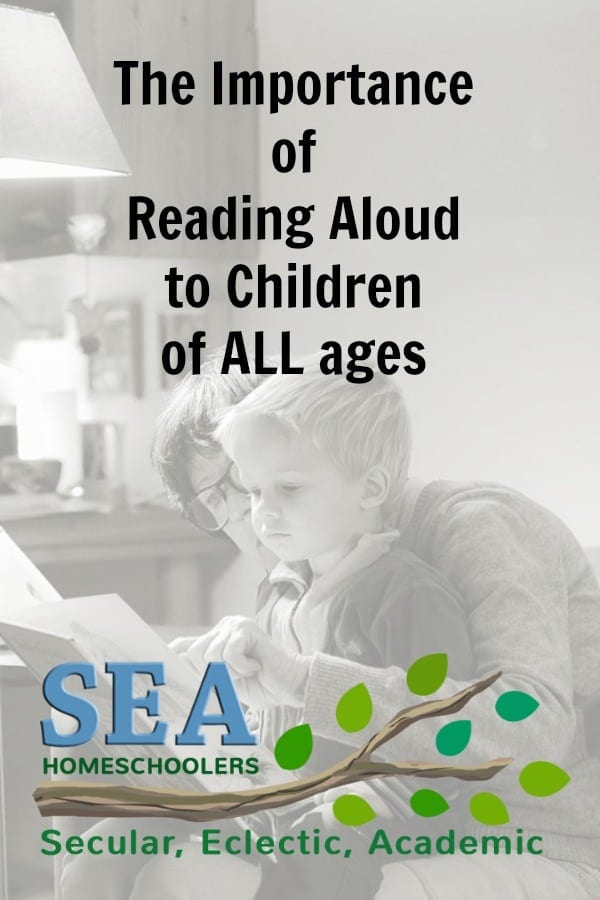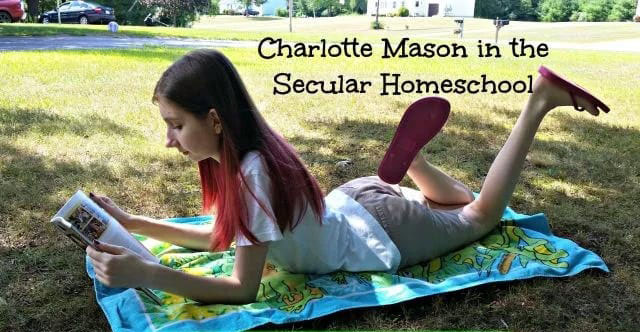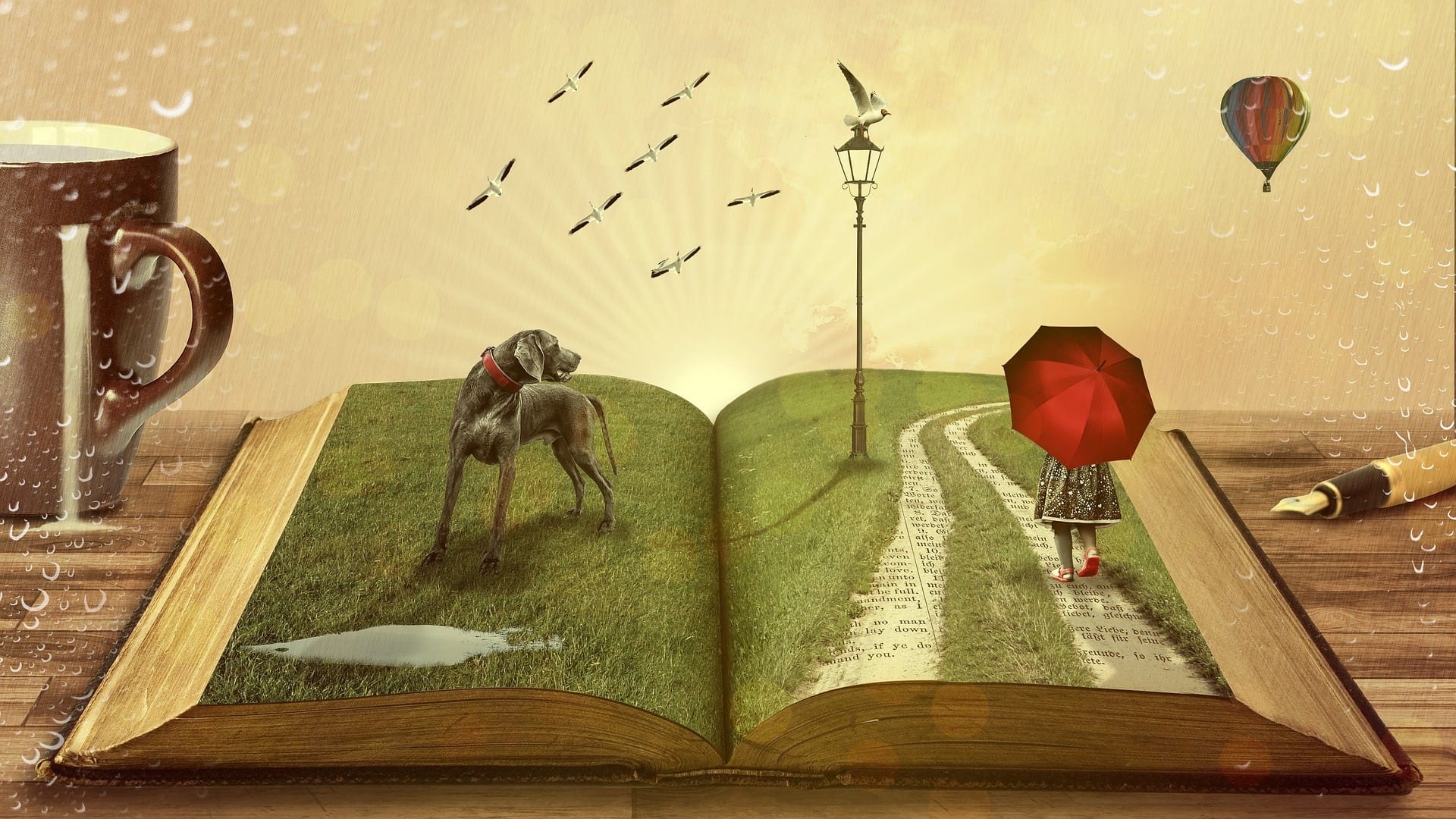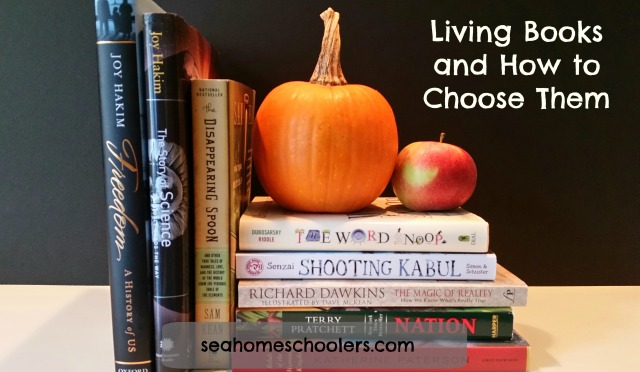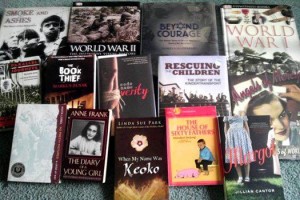The Importance of Reading Aloud
Reading aloud to your children is so important. I cannot stress that enough. It may be one of the most important things you do for them, educationally speaking. Most parents can find the time to read a picture book or two with their infants and toddlers, but once a child learns to read, that snuggly read aloud time usually ends. But, I think it’s actually more important to continue that read aloud time, well into their school years.
But my child is fully capable of reading their own books. Why should I read aloud to him?
There are a number of reasons, but I’ll list my top 5 (plus one):
5. Reading aloud creates a family bond, especially if there are siblings listening as well. Your children will fondly look back on their memories of listening to you read aloud, giggle over how you did “all the voices,” and fondly recall favorites stories heard at your knee. Just because a book is considered “children’s” literature, doesn’t mean it’s childish. Many of my favorite books are written for children! A good story is a good story, and you may find that you enjoy many great books just as much as your children (if not more!). Some of my favorite memories are of reading aloud to my children. Getting to share my favorite stories with them means I get to enjoy those books in a whole new way. I get to see their excitement when Harry learns that he is a wizard, laugh with them at the ridiculousness of Gandalf trying to sneak a dozen dwarves into Beorn’s hall, and cry with them when Wilbur loses his best friend. We can have big, juicy discussions about the unfairness of death, the realities or racism, and how media affects our lives all while snuggled together on the couch enjoying a good story.
4. Reading aloud will help to stimulate their imagination. When you read aloud, you don’t have to choose books at any particular reading level. When your daughter is still just getting comfortable with easy chapter books, you can also read aloud books far above her level. You can expose them to fantasy worlds full of talking animals, knights and battles, distant countries… the literary world is open to you! Literature is peopled with characters that your children will want to emulate and filled with places they’ll want to pretend. Poetry will fill their minds with beautiful language and spark their own creativity with words and stories. Reading fairy tales and mythology with show them how stories have evolved over time, and give them the cultural background to understanding many of the novels they will read over their lifetime.
3. Literature will expose them to difficult ideas and situations in a safe way. Life is full of hard truths, and what better way to learn of them than from a beautifully written story read to them by someone they love and trust? Charlotte’s Web shows that sometimes, a beloved friend dies, not from any terrible illness or violent act, but simply because it’s part of life. Literature will also build empathy – they’ll put themselves in the characters place, wondering how they would react in the same situation. Our world desperately needs more empathetic people. So read to your children widely, about people who live far differently from them so that they can grow into compassionate and empathetic adults who will change the world.
2. Reading aloud to your children can increase their vocabulary. Again, because you aren’t limited to choosing books within their reading level, you can expose them to a world of beautiful language. This will also help build their thinking skills – rather than interrupt the story to ask about a particular word, they’ll be more apt to use context clues to try and figure it out themselves. When you read good books together, you no longer need a separate vocabulary curriculum. If you want to go deeper, you can choose a word or two from a book every day, or just pepper your normal conversations with those words that you want them to pick up. The more they hear, the richer their vocabulary will become.
1. Reading to your children, daily, starting when they are very young, will build their attention span. A child who’s been read to his whole life will be able to concentrate and pay attention to something for far longer than a child who spends all of his time playing video games or watching television.
I want to share some of my family’s favorite read alouds:
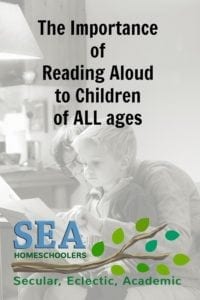 Where the Wild Things Are by Maurice Sendak
Where the Wild Things Are by Maurice Sendak
Winnie the Pooh and The House at Pooh Corner by A.A. Milne
The Tale of Despereaux by Kate DiCamillo
The Harry Potter series by J.K. Rowling
The Evolution of Calpurnia Tate by Jaqueline Kelly
The Mysterious Benedict Society by Trenton Lee Stewart
The Hobbit by J.R.R. Tolkien
Nation by Terry Pratchett
Watership Down by Richard Adams
The Book Thief by Markus Zusak
But most importantly – reading to your children will give them a love of literature. I mourn for the children who grow up thinking Winnie the Pooh is just a brightly colored cartoon character and never get to meet Charlotte and Wilbur, Sara Crewe, Charlie Bucket and Tom Sawyer. Reading aloud will give them a respect for the written word, introduce them to the wide world and the great conversation and build their cultural literacy. It will give them a legacy of great literature to pass on to their own children.
Read more articles about secular homeschooling
Check Out these Great Children’s Books at SEA Books & More.
Five Reading Comprehension Activities
Vetting Secular Science Curriculum
Choosing a Service Project for Secular Homeschooling Families
Emily Cook is the author and creator of the secular homeschooling curriculum Build Your Library, a literature-based K-10 program infused with the teachings of Charlotte Mason. She writes full year lesson plans as well as shorter topical unit studies. Emily has been a secular homeschooling parent of four children in Southern NH for 14 years. She is passionate about reading aloud to children of all ages and loves to share her love of literature with others. She and her family also makes incredibly dorky videos about homeschooling, books and more on Youtube at ARRRGH! Schooling. You can follow her on Facebook, Twitter and Pinterest. You can also check out her author page on Amazon.

